Alaska bear photos
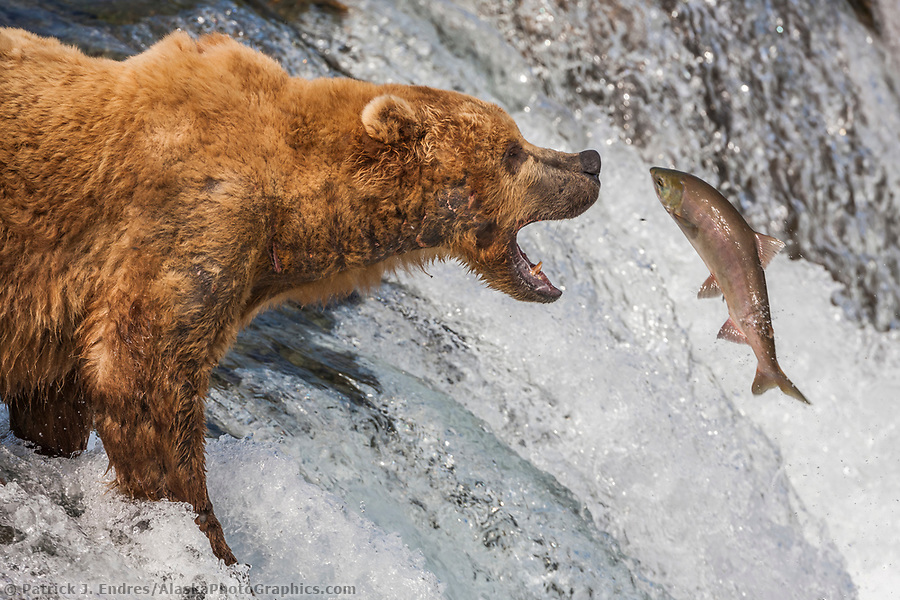
Brown bears fish for red salmon at the Brooks River Falls, Katmai National Park, southwest Alaska. (Patrick J Endres / AlaskaPhotoGraphics.com)
Alaska’s Bears
Alaska is unique in that it is home to all three species of bears: brown & grizzly bear (same species), black bear, and polar bear. Polar bears live along the northern Arctic shores and the offshore icepack. The grizzly bear is common to the Interior and Arctic regions and feeds primarily on vegetation. The brown bears, although the same species, grow much larger due to the protein-rich diet of salmon found in Alaska’s coastal areas. Black bears inhabit the forested and coastal regions and are the smallest of the three bear species. The Alaska bear photos you see here are available to license as stock photos for commercial use or purchase as fine art prints for home or office.
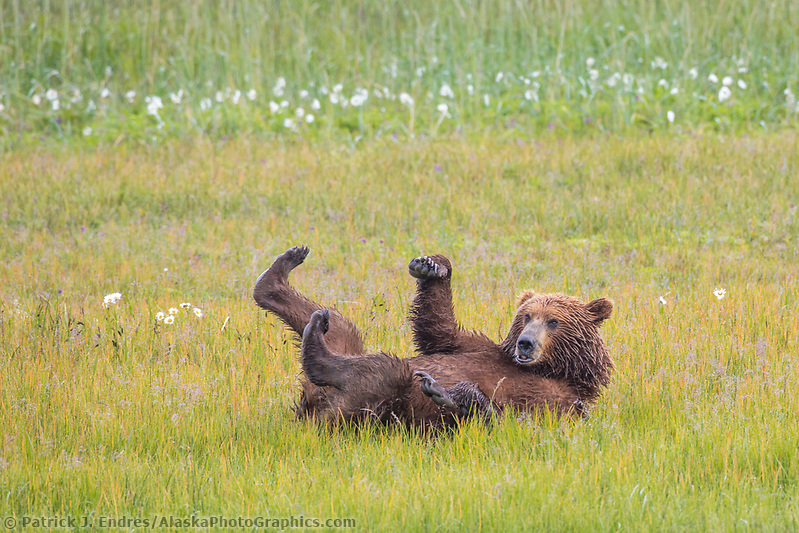
Coastal brown bear rolls in a grassy meadow with its feet sticking in the air. Katmai National Park, the Alaska Peninsula, southwest Alaska. (Patrick J. Endres / AlaskaPhotoGraphics.com)
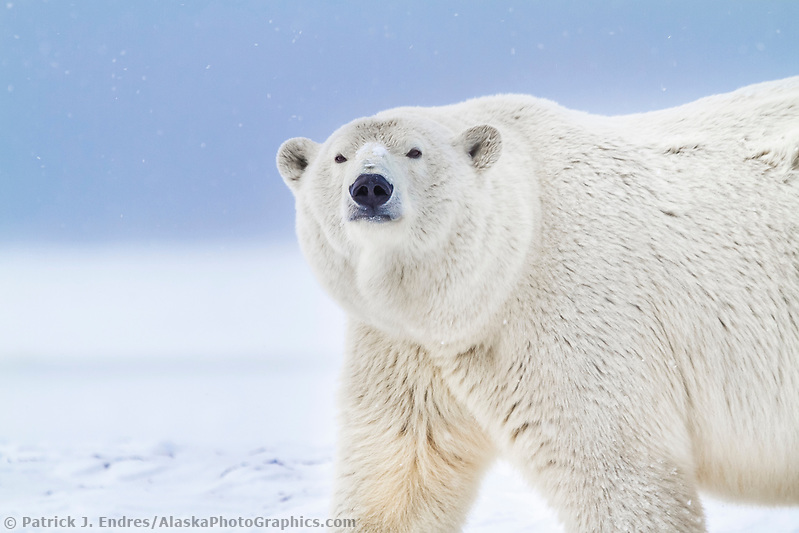
Portrait of an adult female polar bear in the snow on an island in the Beaufort Sea on Alaska’s Arctic coast. (Patrick J. Endres / AlaskaPhotoGraphics.com)
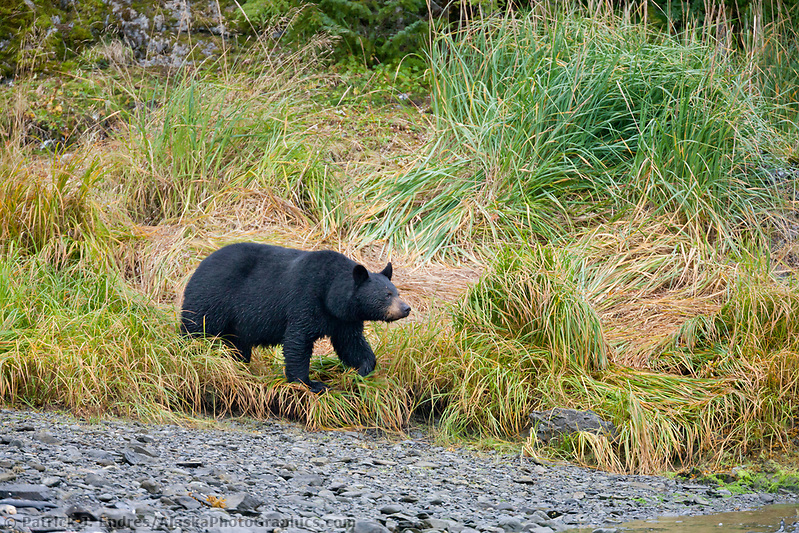
Black bear along a pink salmon, western Prince William Sound, Chugach National Forest, Kenai Peninsula, southcentral Alaska. (Patrick J. Endres / AlaskaPhotoGraphics.com)
Alaska bear photo search
- Grizzly bear photos (Ursus arctos)
- Brown bear photos (Ursus arctos)
- Polar bear photos (Ursus maritimus)
- Black bear photos (Ursus americanus)
A healthy respect for bears
Bears are, among all land mammals, the most formidable creatures. The utmost respect for their wildness is essential. Like all mammals, bears communicate with each other. It is wise to learn their language of body posture and behavior. The National Park service offers instruction on how to act in bear country through video kiosks at Park Headquarters. For some places, like Brooks Falls in Katmai, viewing is required.
Taking your own Alaska bear photos
You are lucky if you are a photographer seeking to take your own Alaska bear photos. It is a thrilling experience and can be done safely in many parts of Alaska. I’ve photographed all three species, but most of my efforts have focused on the brown bear and polar bear. Not that photographing any bear is really “easy,” but the brown bear, favoring open country in the Interior and Arctic, presents itself more often. Additionally, the coastal brown bear congregates in large numbers to feed on salmon, and places like Brooks Falls in Katmai National Park or the McNeil River Sanctuary offer lovely access to these animals for photography. Due to the remoteness of their habitat, polar bears are a little more challenging to photograph. A few Inupiat native villages along the Arctic coast, like Kaktovik, can provide an access point for polar bear photography. Some notable bear-viewing destinations offer a safe environment for both observation and photography. Below are a few popular ones, but there are many more:
Brooks Falls, Katmai National Park (Brown bears) Southwest Alaska
McNeil River Sanctuary (Brown bears) Southwest
Denali National Park (Grizzly bears) Interior Alaska
Annan Creek (Black bears) Southeast Alaska
Brown bears
Brown and grizzly bears, the same species (Ursus arctos)
Taxonomists classify brown and grizzly bears as the same species, Ursus arctos. However, brown bears on Kodiak Island are classified as a distinct subspecies (Ursus arctos middendorffi). While Ursus arctos are omnivorous, they are mainly differentiated because of their diet. “Brown bear” refers to the bears that inhabit the coastal areas where the protein-rich food source of salmon makes the animal much larger. “Grizzlies live in the Interior and Arctic regions and eat a vegetarian diet.
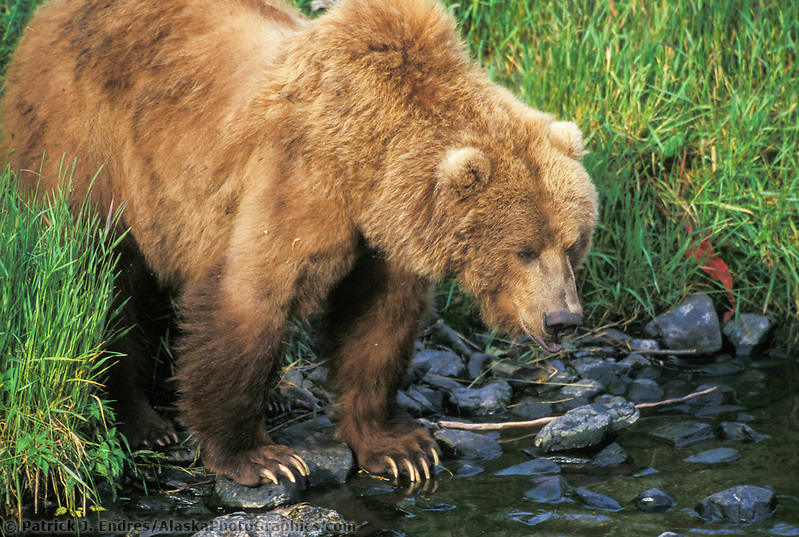
The Kodiak brown bear is a distinct subspecies of the brown bear(Ursus arctos middendorffi). A female bear fishes along the stream edge, Kodiak, Alaska (Patrick J. Endres / AlaskaPhotoGraphics.com)
General Description
Brown Bears appear in many color variations ranging from light brown or blonde to dark brown or almost black. The tips of the longer guard hairs may often be lighter. While the brown bear resembles its close relative, the black bear (Ursus americanus) is larger and has a more prominent shoulder hump, smaller ears, and longer, straighter claws. These physical characteristics should be used to distinguish the brown bear from the black bear because both species vary in color.
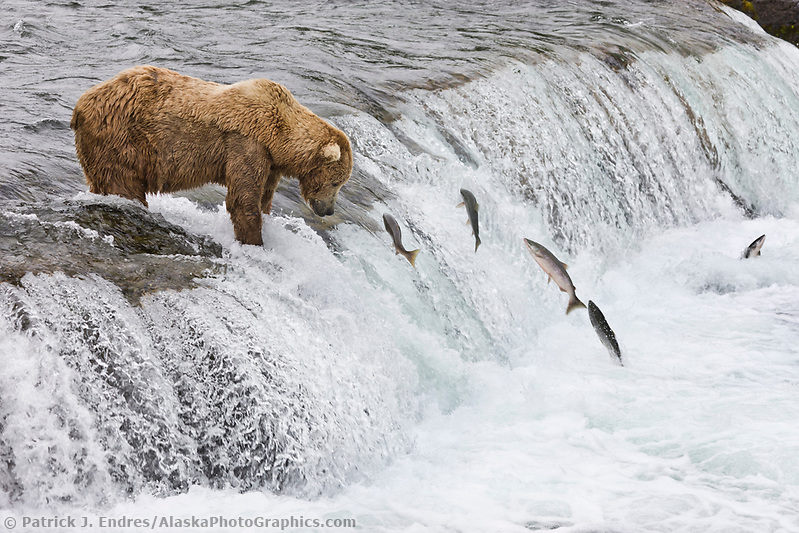
Brown bear fish for red salmon at the falls of Brooks River, Katmai National Park, southwest Alaska. (Patrick J. Endres / AlaskaPhotoGraphics.com)
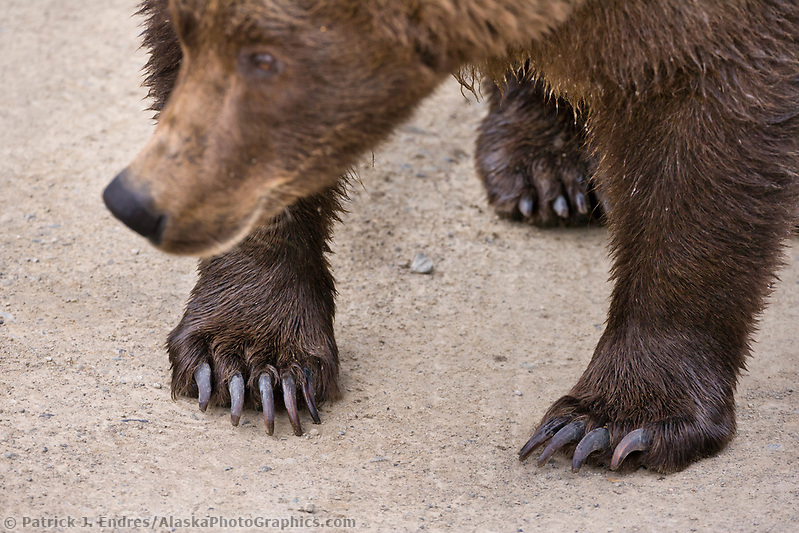
Brown bear claws are longer and straighter than those black bears. Katmai National Park, southwest Alaska. (Patrick J. Endres / AlaskaPhotoGraphics.com)
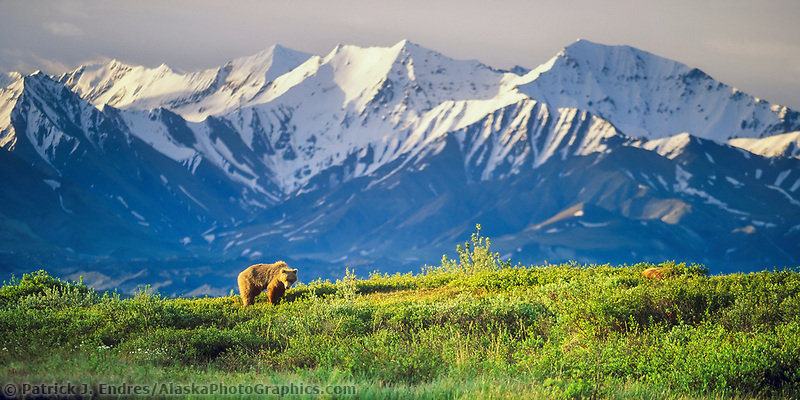
Female grizzly bear basks in the morning sun near a small tundra pond in Denali National Park, Alaska, snow-covered Alaska mountain range in the distance. (Patrick J. Endres / AlaskaPhotoGraphics.com)
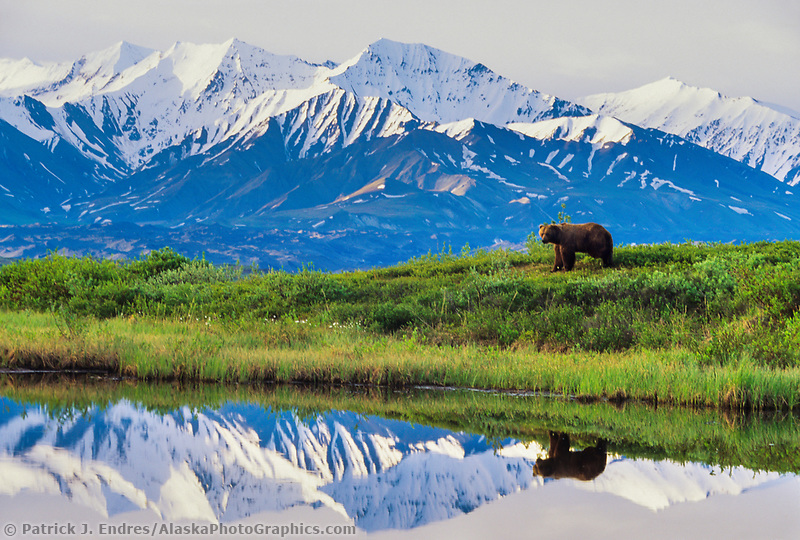
While not always the case, male or boar grizzly bears are often darker in color than female bears. Denali National Park, Alaska (Patrick J. Endres / AlaskaPhotoGraphics.com)
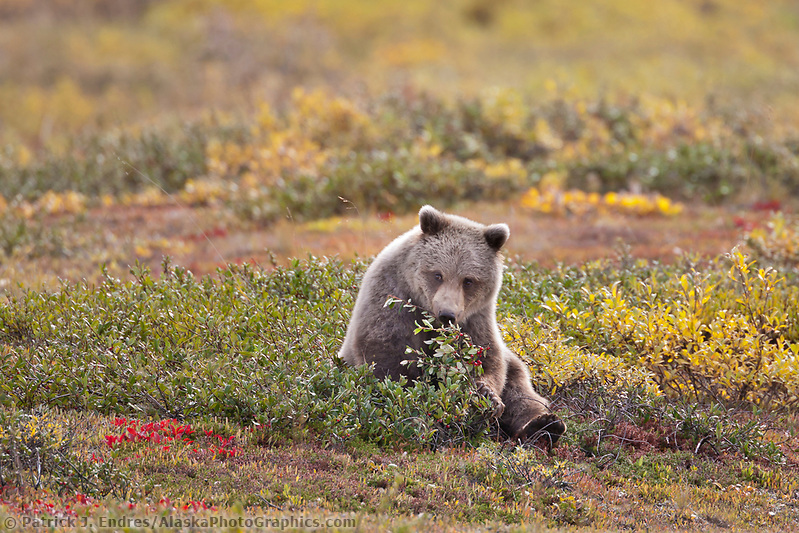
Bears that inhabit the Interior and Arctic regions of Alaska eat a vegetarian diet primarily. Grizzly bear feeds on ripe, red soapberries in Highway pass, Denali National Park, interior, Alaska. (Patrick J. Endres / AlaskaPhotoGraphics.com)
Polar Bears (Ursus maritimus)
General Description
The polar bear is native to Alaska’s Arctic coast and ice pack. They travel great distances, roaming the ice during the dark winter and hunting for food. Their thick fat (up to four inches on the rump) and fur insulate it against the severe cold, and their fine fur, which appears white or cream-colored, camouflages it from its prey. The bear’s short tail and small ears help reduce heat loss, and the narrow head and long, tapered body streamline it for swimming. The polar bear has adapted live on land and the ocean and is considered a semi-aquatic marine mammal. Polar bears depend mainly upon fat-rich seals for food, which it hunts from the pack ice. It has uniquely adapted to sea, land, and ice life.
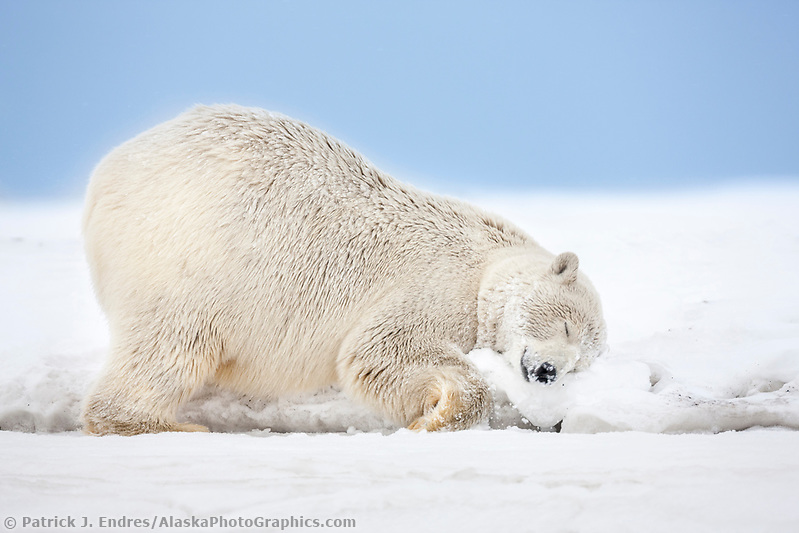
A female polar bear rubs her neck in the snow on an island in the Beaufort Sea on Alaska’s Arctic coast. (Patrick J. Endres / AlaskaPhotoGraphics.com)
Climate Change
Scientists now believe that the projected decreases in the polar sea ice due to global warming will have a significant negative impact or even lead to the extinction of this species within this century. The population of just between 20,000-25,000 polar bears has been shrinking. While there are some 18 distinct polar bear populations, Alaska’s southern Beaufort Sea population plummeted from 1500 animals in 2001 to 900 in 2010 (Ecological Applications Journal). The United States Geological Survey estimates that the polar bear population will shrink to 1/3 of its size by 2050. These population reductions are mainly due to melting sea ice, limiting access to the polar bear’s primary food source.
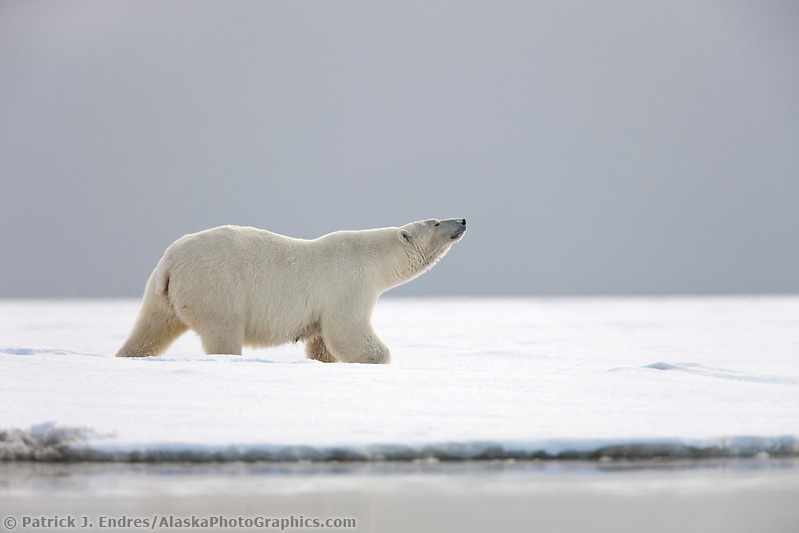
An adult female polar bear stands and sniffs the air on a snowy island along the shores of the Beaufort sea, arctic Alaska. (Patrick J. Endres / AlaskaPhotoGraphics.com)
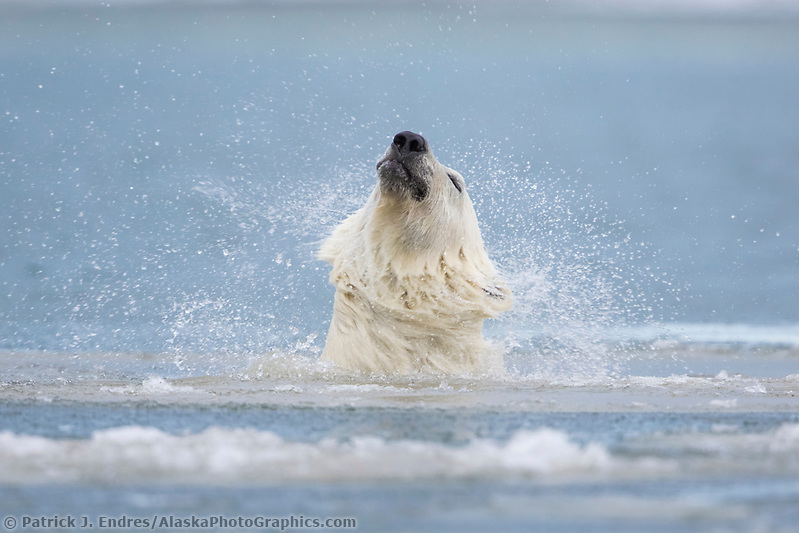
A polar bear shakes off the water while swimming in the Beaufort Sea, Arctic, Alaska. (Patrick J Endres / AlaskaPhotoGraphics.com)
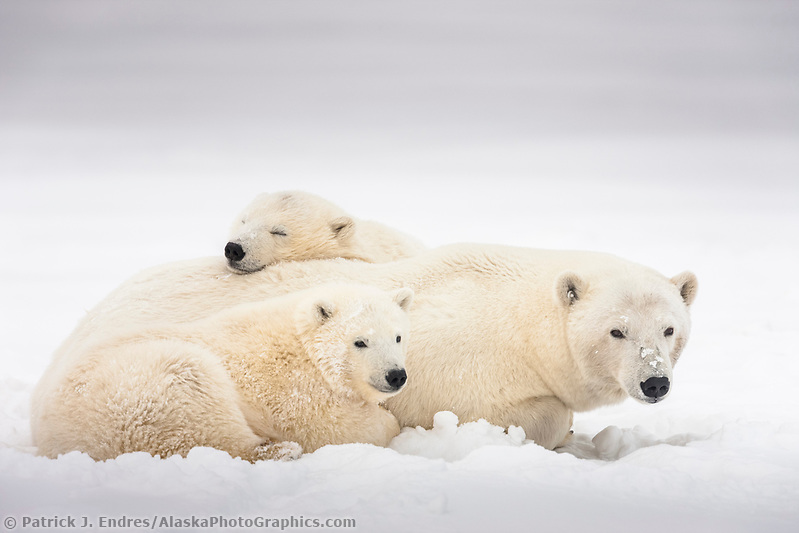
Polar bear sow and cubs relax in the snow on an island in the Beaufort Sea, Arctic, Alaska. (Patrick J. Endres / AlaskaPhotoGraphics.com)
American Black Bear (Ursus americanus)
General Description
Black bears occur over most of the forested areas of Alaska, except in some places in the southeast where islands are inhabited only by brown bears. Black bears are often associated with forests but may be found from sea level to higher alpine areas. They hibernate during winter and may build dens in tree cavities, caves, and shallow depressions. Black bears are the smallest of the North American bears, and males are more significant than females. Black bears are opportunistic eaters, but most of their diet consists of plants, berries, and insects, in addition to mammals, carrion, and fish. They have many different color phases ranging from black, brown, cinnamon, blue-black, and sometimes near white, although rare.
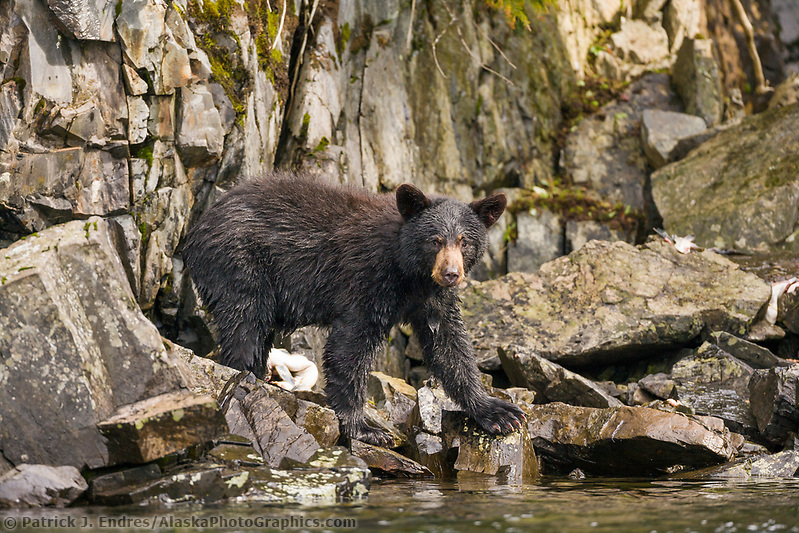
Black bear fishing for Pink salmon along a stream draining into Prince William Sound, Alaska waters. (Patrick J. Endres / AlaskaPhotoGraphics.com)
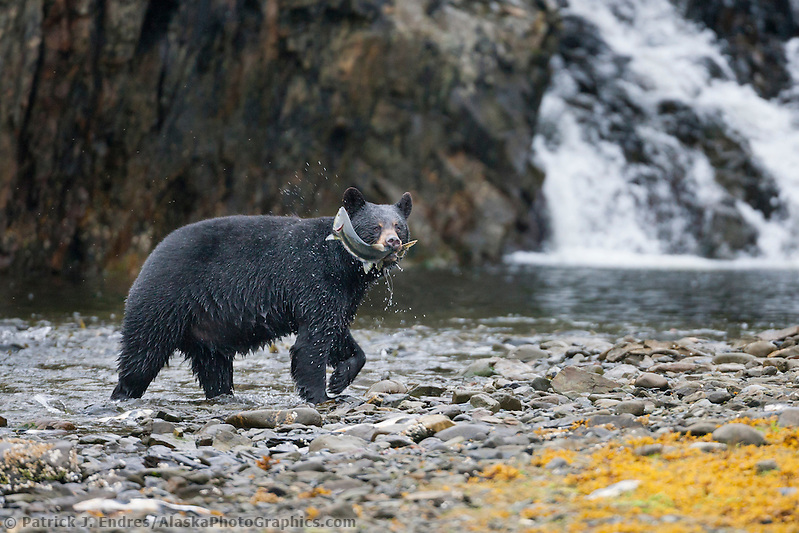
Black bear fish for pink salmon in a stream along western Prince William Sound, Chugach National Forest, Kenai Peninsula, southcentral Alaska.
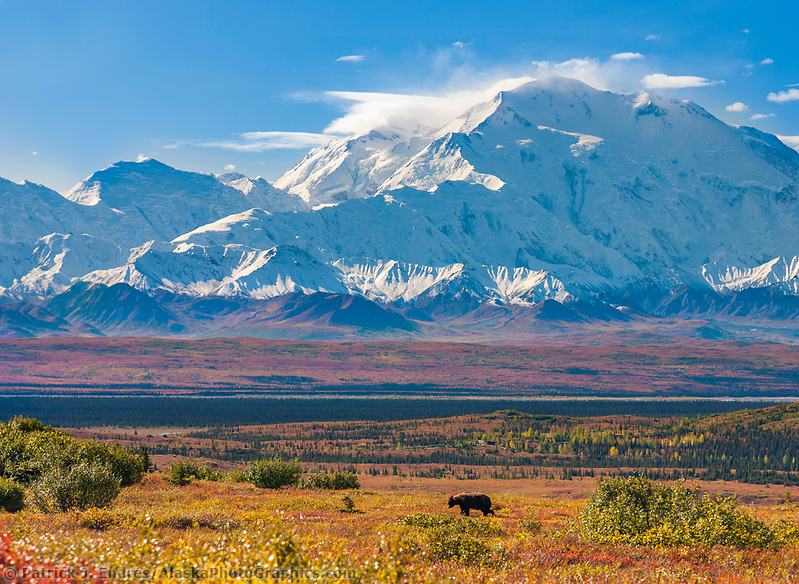
One should use physical features to identify a black bear from a grizzly bear because they appear in many different color phases. Cinnamon phase black bear feeds on blueberries on the autumn tundra near Wonder Lake, Denali of the Alaska Range mountains, Denali National Park, interior, Alaska. (Patrick J. Endres / AlaskaPhotoGraphics.com)
